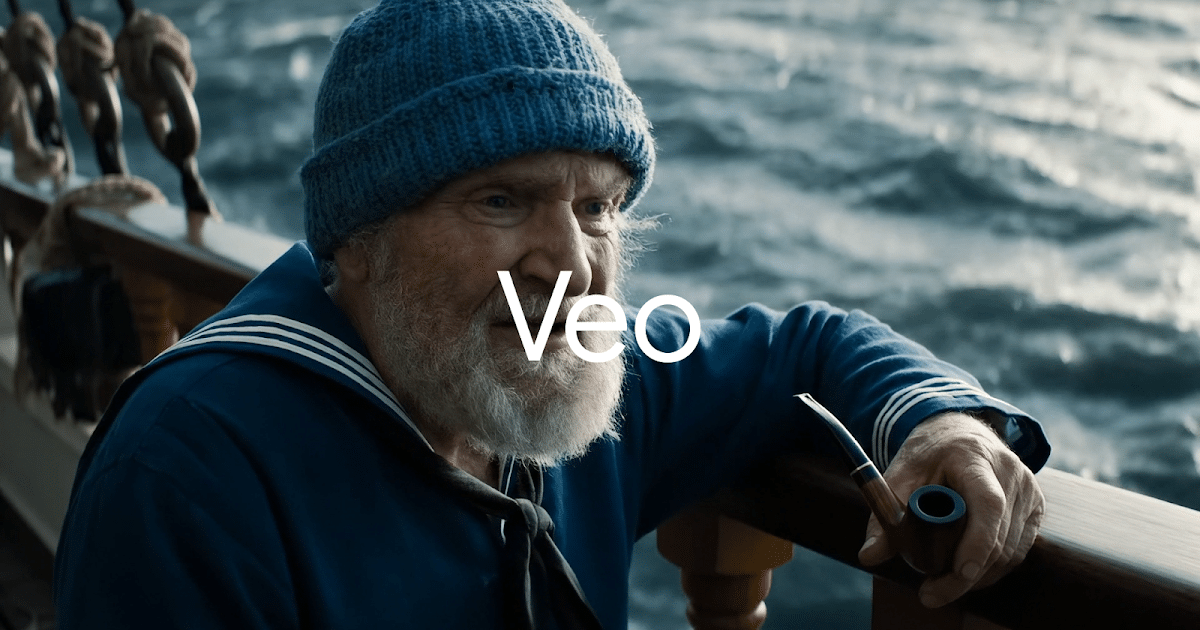Veo 3 is Google’s latest AI-powered video generation model that transforms text descriptions into realistic videos complete with synchronized audio. Think of it as having a Hollywood production studio in your pocket, except it’s powered by artificial intelligence rather than a crew of hundreds.
But here’s the thing everyone’s talking about in boardrooms and creative agencies across America: while Veo 3 represents a breakthrough in AI video technology, it’s not exactly the democratized solution many hoped for. With strict access limitations, premium pricing, and an 8-second video cap, it’s more like getting a taste of the future rather than the full meal.
That’s precisely why alternatives like vidBoard are gaining traction among small businesses, entrepreneurs, and professionals who need practical video solutions today, not tomorrow.
What Exactly Is Veo 3?
Imagine describing your dream video in plain English and watching it come to life within minutes. That’s the promise of Veo 3, Google’s third-generation video synthesis model developed by DeepMind.
Unlike its predecessors that produced silent clips requiring separate audio production, Veo 3 generates native audio alongside video content. This means dialogue, sound effects, background music, and environmental audio are all created simultaneously with the visual elements.
The technology builds on Google’s extensive research in large language models and computer vision. At its core, Veo 3 uses diffusion models to gradually transform random noise into coherent video frames while maintaining temporal consistency across sequences.
Image Recommendation: Screenshot showing Veo 3’s interface with a text prompt and resulting video output
Here’s what makes Veo 3 genuinely impressive from a technical standpoint:
Advanced physics simulation for realistic water, fabric, and lighting effects
Camera control features including pans, tilts, and cinematic movements
Character consistency (though still imperfect) across video sequences
Multiple aspect ratio support from 16:9 widescreen to 9:16 vertical formats
But before you get too excited, let’s talk about the elephant in the room: access and limitations.
Key Features That Set Veo 3 Apart
Native Audio Generation
This is Veo 3’s killer feature. The model generates synchronized audio with 99.5% lip-sync accuracy, creating:
Realistic dialogue matching character lip movements
Environmental sounds that match the visual scene
Background music and ambient audio
Sound effects synchronized with on-screen actions
Resolution and Quality Options
Veo 3 offers flexibility in output quality:
4K resolution for 8-second clips (premium quality)
1080p resolution for longer content
Veo 3 Fast variant at 720p with 2x generation speed
30fps frame rate for smooth motion
Advanced Prompt Understanding
The model excels at interpreting complex, descriptive prompts. You can specify:
Camera movements and angles
Lighting conditions and mood
Character descriptions and actions
Environmental details and settings
Artistic styles and visual aesthetics
Cinematic Controls
Professional-grade features include:
Camera movements: pans, tilts, zooms, tracking shots
Lighting control: golden hour, dramatic shadows, studio lighting
Depth of field effects for cinematic focus
Color grading options for specific visual moods
Image Recommendation: Comparison grid showing different cinematic styles achievable with Veo 3
The Reality Check: Veo 3’s Limitations
Let’s be honest about what you’re actually getting with Veo 3, because Google’s marketing materials don’t always tell the complete story.
The 8-Second Wall
Current video duration is capped at 8 seconds maximum. For context, that’s barely enough time for a single sentence of dialogue or a brief product demonstration. Most marketing videos, educational content, or business presentations require significantly longer durations.
Pricing That Adds Up Quickly
The cost structure is steep for regular use:
Google AI Pro Plan: £24/month ($30) for basic access
Google AI Ultra Plan: £195/month ($249.99) for higher limits
API pricing: £0.95 ($1.2) per 8-second generation at 720p
Do the maths: creating just 50 short clips monthly would cost over £47 ($60) in API fees alone, before subscription costs.
Access Restrictions
Veo 3’s photo-to-video feature isn’t available in the UK, European Economic Area, or Switzerland due to regulatory considerations. Even in supported regions, daily generation limits restrict professional workflows.
Character Consistency Challenges
While improved, maintaining the same character across multiple scenes remains problematic. This makes it difficult to create cohesive narratives or brand-consistent content series.
Generation Time
Typical processing takes 3-5 minutes per video, which isn’t ideal for rapid content creation or live applications.
Did You Know? Professional users report that while Veo 3 delivers impressive quality, the combination of time constraints, cost, and access limitations makes it impractical for regular business use.
Veo 3 vs vidBoard: The Practical Comparison
Here’s where things get interesting for small businesses and professionals seeking video solutions that actually work within real-world constraints:
| Feature | Google Veo 3 | vidBoard |
|---|---|---|
| Maximum Video Length | 8 seconds | 10-15 mins |
| Monthly Cost (Basic) | £24 ($30) | Lifetime deals starting from $99 |
| Daily Generation Limits | 5 videos (Pro), 125 videos (Ultra) | 50+ videos depending on plan |
| Geographic Availability | Restricted in UK/EU | Available globally |
| Audio Generation | Native AI audio | Human-quality voice cloning |
| Character Consistency | Limited | Consistent avatars across videos |
| Learning Curve | Complex prompting required | User-friendly interface |
| Business Integration | Limited API access | Full workflow integration |
| Template Library | None | 100+ professional templates |
| Customer Support | Community forums | Direct support team |
Image Recommendation: Side-by-side interface comparison showing Veo 3’s prompt interface versus vidBoard’s template-based approach
The numbers tell a compelling story. Over 70 million videos have been created with Veo 3 since May 2025, proving there’s massive demand for AI video generation. However, the limitations mentioned above explain why many users are exploring alternatives.
vidBoard addresses these pain points by focusing on practical business needs rather than cutting-edge technology for its own sake. While Veo 3 impresses with technical capabilities, vidBoard delivers actual solutions for real workflows.
Getting Started With Veo 3 (If You Can)
Assuming you’ve decided to try Veo 3 despite its limitations, here’s the current access process:
Step 1: Check Availability
Visit Gemini’s video generation page to confirm Veo 3 is available in your region. Remember, photo-to-video features are blocked in the UK and EU.
Step 2: Choose Your Plan
Google AI Pro (£24/month): Basic access with limited daily generations
Google AI Ultra (£195/month): Higher limits and priority processing
Enterprise API: Contact Google Cloud for custom pricing
Step 3: Master Prompt Engineering
Effective Veo 3 prompts require specific formatting. Here are examples:
Basic Scene Creation:
"A professional woman in a navy suit presenting a quarterly report in a modern conference room, soft natural lighting from large windows, medium shot, camera slowly zooms in on her confident expression"
Product Demonstration:
"Close-up shot of hands demonstrating a smartphone app, clean white background, studio lighting, fingers tapping interface elements, shallow depth of field focusing on screen"
Brand Storytelling:
"Aerial view of a sustainable farm at sunrise, golden hour lighting, camera pans across rows of organic vegetables, farmers working in the distance, peaceful morning atmosphere"
Step 4: Optimize for Best Results
Keep prompts under 500 characters
Specify camera angles and movements
Include lighting and mood descriptions
Mention desired aspect ratio
Test multiple variations for better outcomes
Pro Tip: Save successful prompts as templates since there’s no built-in prompt library in Veo 3.
Real-World Use Cases and Applications
Despite its limitations, Veo 3 excels in specific scenarios where 8-second, high-quality clips add value:
Social Media Content
Instagram Stories and Reels: Short, eye-catching videos perfect for the 8-second limit. Marketing agencies use Veo 3 for:
Product reveal teasers
Behind-the-scenes glimpses
Brand personality clips
Seasonal campaign elements
Advertising and Marketing
Commercial Concepts: Ad agencies leverage Veo 3 for rapid prototyping:
Storyboard visualization
Concept testing with clients
A/B testing different approaches
Cost-effective pre-production planning
Educational Snippets
Micro-Learning Content: Training companies create:
Key concept illustrations
Process demonstrations
Scenario-based examples
Assessment question visuals
E-commerce Enhancement
Product Showcases: Online retailers generate:
360-degree product views
Usage demonstrations
Lifestyle context shots
Feature highlighting clips
Image Recommendation: Collage showing various Veo 3 outputs across different industries and use cases
However, each of these applications faces the same fundamental challenge: most real-world video needs exceed 8 seconds. This is where vidBoard’s unlimited duration becomes a decisive advantage.
The vidBoard Alternative: Why SMBs Are Making the Switch
While tech enthusiasts debate Veo 3’s capabilities, practical business owners are choosing solutions that actually solve their problems. Here’s why vidBoard is gaining traction:
Unlimited Video Duration
Create 30-minute presentations, full training modules, or comprehensive product demos without arbitrary time restrictions. This single advantage eliminates Veo 3’s biggest limitation.
Ready-to-Use Templates
Instead of wrestling with complex prompts, choose from professionally designed templates for:
Sales presentations
Training materials
Marketing campaigns
Educational content
Internal communications
Consistent Brand Identity
Upload your brand assets once and maintain consistency across all videos. Custom avatars ensure your spokesperson looks the same in every clip, solving Veo 3’s character consistency problem.
Predictable Pricing
Fixed monthly costs without per-generation fees mean you can budget accurately. No surprises when your video needs increase during busy periods.
Global Accessibility
vidBoard works everywhere, without geographic restrictions or regulatory complications. Your team can create content regardless of location.
Callout Box: “One vidBoard customer reported saving over £800 monthly by switching from a combination of Veo 3 API calls and traditional video production to vidBoard’s unlimited plan.”
Frequently Asked Questions About Veo 3
Is Veo 3 available to the public?
Yes, Veo 3 is publicly available through Google AI Pro and Ultra subscriptions, though access varies by region. The photo-to-video feature remains restricted in the UK, EU, and Switzerland due to regulatory considerations.
Can I use Veo 3 on my phone?
Veo 3 runs through web browsers and doesn’t require specific mobile apps. However, the interface isn’t optimized for mobile devices, and processing intensive prompts may be challenging on smartphones.
What is the best AI video generator?
This depends on your needs. Veo 3 offers cutting-edge quality but with significant limitations. For business users prioritizing reliability, duration flexibility, and cost-effectiveness, alternatives like vidBoard often prove more practical.
What is the difference between Veo 3 and Veo 3 5G?
There is no “Veo 3 5G” model. You might be thinking of “Veo 3 Fast,” which generates videos 2x faster than standard Veo 3 but at 720p resolution instead of 4K.
Can ChatGPT generate videos?
No, ChatGPT cannot generate videos directly. While OpenAI has announced Sora for video generation, it remains in limited testing. ChatGPT can help write video scripts and prompts for other AI video tools.
Can you go live on social media with Veo Cam 3?
Veo Cam 3 is a different product entirely – it’s a sports camera system, not related to Google’s Veo 3 AI video generator. For live streaming AI-generated content, you’d need to create videos with Veo 3 first, then stream them through traditional platforms.
Is Gemini better than ChatGPT?
For text generation, both have strengths. Gemini integrates better with Google services and includes multimodal capabilities like Veo 3 video generation. ChatGPT excels at conversational AI and has a larger ecosystem of integrations.
What is the alternative to Google Veo 3?
Popular alternatives include OpenAI’s Sora (limited access), Runway ML, Pika Labs, and for business users seeking practical solutions, vidBoard offers unlimited video duration with professional templates.
How much does Veo 3 Fast cost?
Veo 3 Fast costs £0.95 ($1.2) per 8-second video generation at 720p resolution through the API. Subscription plans include different allocation limits.
How to connect Veo 3 to internet?
Veo 3 runs in the cloud through Google’s servers. You simply need an internet connection to access it through your browser or API calls. There’s no local installation required.
The Future of AI Video Generation
Looking ahead, the AI video generation market shows remarkable growth potential. Valued at $534.4 million in 2024, it’s projected to reach $2.56 billion by 2032 with a 19.5% annual growth rate.
This expansion is driven by several converging trends:
Democratization of Video Production
Traditional video production requires expensive equipment, technical expertise, and significant time investment. AI tools are removing these barriers, enabling anyone to create professional-quality content.
Personalization at Scale
Businesses increasingly need personalized video content for different audiences, markets, and use cases. AI generation makes this economically viable for the first time.
Integration with Existing Workflows
The most successful AI video tools won’t operate in isolation. They’ll integrate seamlessly with existing marketing platforms, CRM systems, and content management workflows.
Quality Improvements
Current limitations like duration restrictions, character consistency issues, and processing times will improve rapidly as the technology matures.
Image Recommendation: Infographic showing the projected growth of AI video generation market from 2024 to 2032
However, there’s a crucial distinction between technological capability and practical utility. While Veo 3 showcases impressive technical achievements, tools like vidBoard are focusing on solving real business problems today.
Making the Right Choice for Your Needs
The decision between Veo 3 and alternatives ultimately comes down to your specific requirements:
Choose Veo 3 if:
You need cutting-edge video quality for short clips
Budget isn’t a primary concern
You have time to master complex prompting
8-second duration meets your needs
You’re in a supported geographic region
Choose vidBoard if:
You need reliable, unlimited-duration videos
Cost-effectiveness is important
You want ready-to-use templates
Consistent branding matters
You need customer support
Your team requires user-friendly tools
The numbers support this practical approach. While over 70 million videos have been created with Veo 3, the majority of businesses still struggle with its limitations for regular content creation.
Pro Tip: Many successful businesses use a hybrid approach – leveraging Veo 3 for high-impact, short-form content while relying on practical tools like vidBoard for regular video needs.
Your Next Steps
The AI video generation revolution is happening now, but you don’t need to wait for perfect technology to start benefiting from these tools.
If you’re curious about Veo 3’s capabilities and have the budget for experimentation, start with the Google AI Pro plan to test whether its limitations work within your constraints.
However, if you need practical video solutions that work reliably today, try vidBoard free and experience the difference between impressive technology and useful tools.
The future of video content is undoubtedly AI-powered, but the best solution is the one that helps you achieve your goals right now. Whether that’s Veo 3’s cutting-edge capabilities or vidBoard’s practical reliability depends entirely on what you’re trying to accomplish.
Ready to create unlimited AI videos without restrictions? Start your free vidBoard trial today and discover why small businesses are choosing practical solutions over impressive limitations.
The video revolution is here. The question isn’t whether you’ll join it, but which tool will help you succeed in it.

























